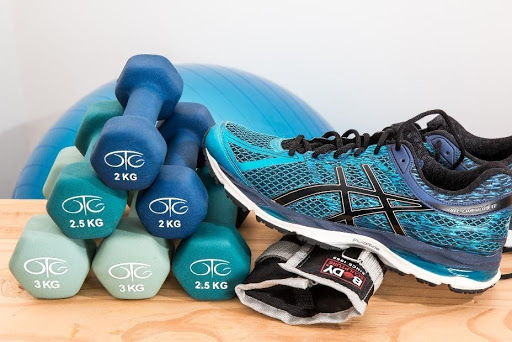COVID as a research opportunity
Did you take up physical activity during the COVID-19 lockdown period? Did you maintain this? Do you have a new physical activity habit? This is what we were interested in exploring further in our study.
 Our survey looks to understand habit change in relation to physical activity. We took the opportunity presented by the Covid-19 pandemic, when people appeared to be taking up new/different forms of physical activity, to understand how physical activity habits form, for who, and what factors predict persistence of these habits.
Our survey looks to understand habit change in relation to physical activity. We took the opportunity presented by the Covid-19 pandemic, when people appeared to be taking up new/different forms of physical activity, to understand how physical activity habits form, for who, and what factors predict persistence of these habits.
We wanted to do this as we don’t know much about the conditions required for habit formation – to learn more, this article by Hagger (2018) presents an excellent overview of research in this area.
But we weren’t the only ones jumping on the research opportunity presented by Covid-19 pandemic……‘Volunteer for our COVID related study….’. Did you lose count of the number of invitations you had from academics on this subject?! Given this, we were pleasantly surprised by the level of uptake and we were also not expecting the response and retention rates we witnessed.
Our retention rate
So, what did we achieve? After 2 weeks of advertising, we recruited approximately 500 participants. After some initial drop-off, we maintained a committed group of 250-300 participants who consistently completed a daily or weekly survey for us for about 3 months. Five months on, we have about 180 left. We have now moved to monthly completion of the survey which will continue until the end of January 2021.
So why did people choose to take part in our study? And what has motivated them to continue providing daily/weekly data for over 5 months for seemingly no reward?
Survey design
As researchers when deciding on the design of our survey, we discussed how to maximise response rates particularly as we anticipated the field to quickly become saturated with surveys relating to Covid-19; our study needed to stand-out. Our study design required participants to complete daily, weekly and monthly surveys over an indefinite (but likely lengthy) period. We were very aware of survey fatigue and so we ensured all surveys were
- simple (dichotomous questions or one-word answers wherever possible),
- written in plain English and
- had a clear and attractive design.
Casting the net wide
As with any human research, recruiting participants is the difficult part. When advertising our study, we
- cast a wide recruitment net (using social media, email and Google Ads), and
- personalised our messages with photos of the research team (providing a human touch in an increasingly virtual world and to make our survey stand out from all the others).
 A ‘Lockdown Routine’
A ‘Lockdown Routine’
Invites were sent out at 8pm each evening with a reminder sent at 12pm the following day. Typically, two thirds of people would complete on the evening, the remainder the following day. People told us (anecdotally) that they liked the regularity of the emails and that completing them became part of their ‘lockdown routine’.
The unusual (and unsettling) time in which we carried out this research may have supported our high response rates; this study may have provided a level of routine that people valued. This theory is supported by our observation that as lockdown restrictions were released, our response rates began to tail off.
Creating a Community and Providing a Human Touch
We have reflected on the success of our ongoing communication with participants, and think that these are some of the factors that have helped maintain our participant pool.
- The belief that others (i.e. the research team) are monitoring their daily activity is in itself a motivating factor, something that we didn’t foresee
- We have regularly included statements of gratitude and encouragement, along with research updates within these.
- We have also commented on the weather and national events (e.g. VE day celebrations).
- Furthermore, the reply email inbox has been monitored daily and we have responded to everyone who has contacted the team. This may have helped to give a human face to the research study.

Watch out for...
One of the limitations to the survey is that 77% of the responders are females. There has been a lot of media coverage about the different challenges females and males have experienced throughout the COVID period in particular around childcare and working from home, so this is a factor we will need to explore in the analyses.
Another limitation was that a lot of participants signed up using their work emails which they did not access over the weekend. This meant there were some delays with completing the surveys over the weekend and we needed to keep these entries open until the Monday for them to complete.
The secret to online diary success
The secret to our online survey response rate success it seems would be simplicity, personability and community!
Bios:
Dr Katie Newby is an associate professor and health psychologist within the Centre for Research in Psychology and Sport Science. Her main research focus is on the development and evaluation of health behaviour change interventions.
Dr Lindsay Bottoms is the Head of the Centre for Research in Psychology and Sports Science and is a Reader in Exercise and Health Physiology. Her main research focus is implementing physical activity interventions for health benefits in various special populations.
Dr Terun Desai is a lecturer and researcher in Exercise Physiology and Clinical Nutrition. He has experience in researching the effect of lifestyle (exercise and dietary) interventions on human health. Dr Desai lectures in clinical exercise physiology, nutrition and epidemiology to understand how physical activity and diet can be used to improve public health. He has previously worked and played in elite sport.
Acknowledgements: The authors thank all the participants for participating in our research and becoming a part of our community.